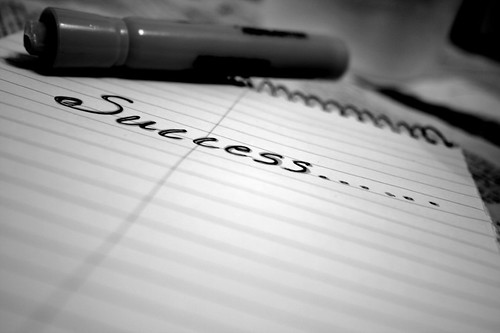When I was in the classroom I always looked forward to
back-to-school. Getting my classroom ready, that feeling of the excitement for
a new year left me with the anticipation for great things to happen. But heading back to school and getting in the groove was less about content and more about ensuring we had a successful school year.
Whether you've been in school for a few days or a month or two, there are a few, simple things you can do to find that success.
Establish
Relationships-Getting to know my students was the first thing I did every
year I taught. There was always that pressure to get starting with the content
but I found that if I made connections with my students, I could more easily
teach them. I understood who they were, their passions, and their interests.
Take the first few days to learn who your students are. The time taken will pay
off in the end. And keep those relationships going. Schedule time to talk with students 1-on-1 as often as you can. Even a simple conversation in the morning or in the hall can prove to be beneficial.
Setting Goals-As
an educator it’s important to reflect on the previous years, the high points
and the low points. Use those reflections to build personal and professional
goals for the new year. Maybe you want to learn a new technology skill or
challenge yourself to grade differently. Whatever your goals, make them
actionable and reachable. Students can do the same. Set aside time to have
students create learning and personal goals they want to accomplish throughout
the year. Develop a plan to check in regularly and report back. Using something like Google Docs or Forms makes collecting and sharing those goals easy.
Get Connected-One
of the most important ways an educator can grow and learn is to get connected.
Joining Twitter, reading blogs and contributing to an online community are all
ways that you can hear about the good things that are happening in other
classrooms/schools and learn from others. These places can also serve as a
virtual sounding board when you run into a problem or need a solution. October is Connected Educator Month so there are many opportunities to learn how to be a connected educator including book studies and free webinars. And speaking of books (shameless plug) you can check out my book, The Relevant Educator: How Connectedness Empowers Learning that can help guide your connected learning.
Celebrate The Good
Things-For some educators the thought of inviting parents into the
classroom is a terrifying one. Parents want to be involved in the classroom and
should be. Make contact with parents as early as you can. I would always beg my
principal for my class list early so I could write and send home a personal
note to each of my students and parents before school started, welcoming them
to my class and letting them know a few things about me and our classroom. This
continued through the year. I tried to write a note twice per year for each
student that got sent home in the mail. With email and texting services like Remind, it’s
even easier to make those connections. Starting off with the positive makes
having to discuss the tough points easier because you’ve established that
relationship and dialogue in a positive way first, rather than a negative one.
Create A Virtual
Classroom-My school website was the way that I let the world know what were
learning in our classroom. I could post notes from class, any files students
needed, use the calendar to post homework and curate a list of resources for
students to use outside of class. It’s important today to create a virtual
space for your classroom. Some districts provide a website for educators to do
this, while others allow them to create their own. There are a wide variety of
products out there (like Edmodo) to do this so spend some time finding one that suits your
needs. You’ll also want to examine how you can extend conversations from your
classroom to the virtual spaces as well. Taking your classroom into the cloud
allows you to create a private space to post questions, comments, blogs and
more. These online spaces allow learning to happen not just in the schoolhouse
but after hours as well.
Whatever you do remember. Teaching and learning is not just about content. Kids need to know you care about them and their learning. Establishing relationships, showing you are a true life-long learner and celebrating them are just as important (and sometimes more-so) than how to multiply fractions or who the 13 President was.
What are some ways you ensure success in your classroom? Leave a comment below.
Photo Credit: seeveeaar via Photopin CC










